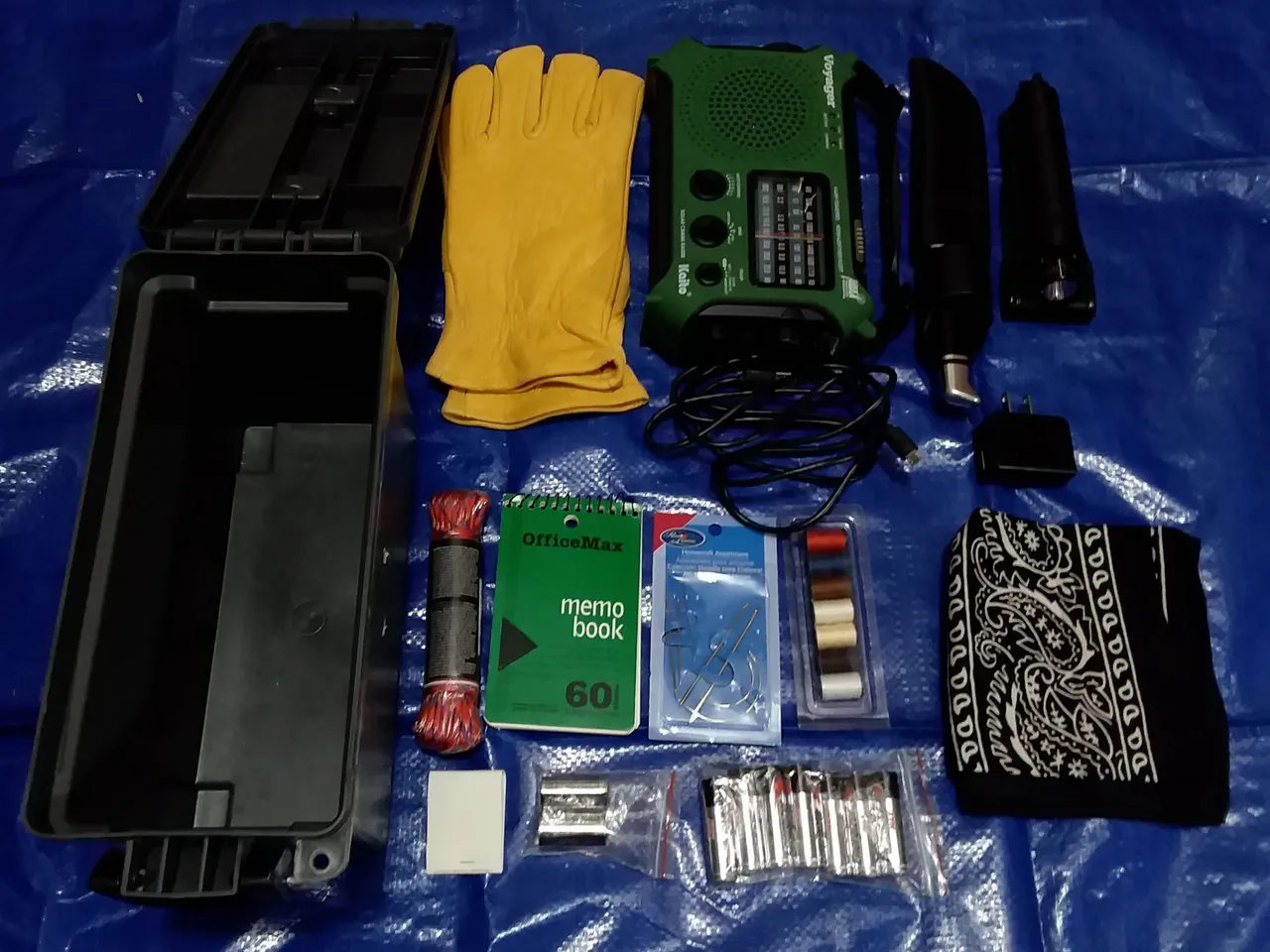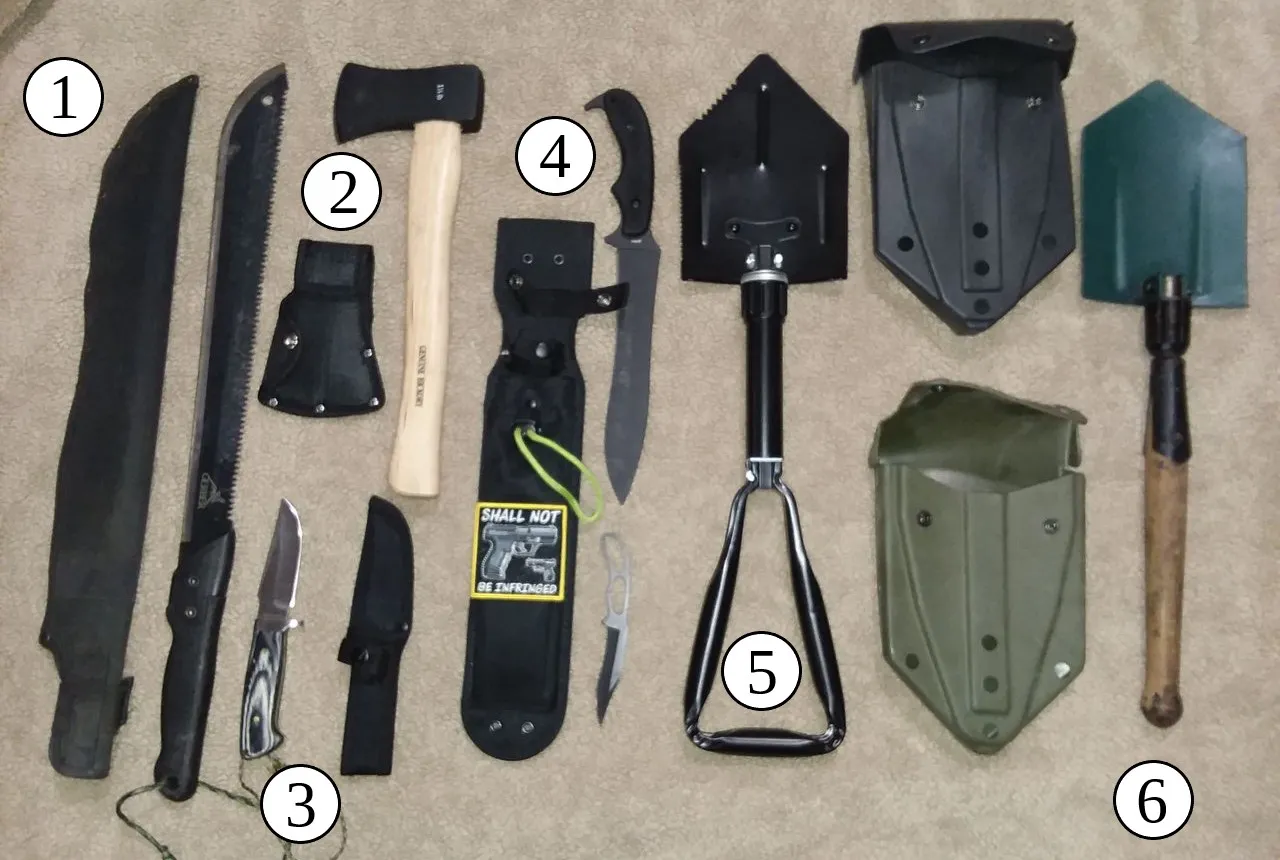First, some caveats: I am not a military veteran. I am not a survival guru. Odds are, neither are you. If we find ourselves facing a local riot or military invasion, our ideal option is to grab our 72-hour packs and important documents, get in our gassed-up cars, and get out of Dodge when we see Bad Stuff looming on the horizon.
But assume that is out of the question. A riot or even open war has come to you. You may need to move on foot around a demonstration that has blocked roads, escape a conflict zone, or even fight. Unfortunately, Ukraine is serving as an example of this problem and then some. Reportedly, civilians are being issued assault rifles and instructed to build barricades for urban insurgent warfare.
The C's of Survival
There is considerable overlap between what one would need for a 24-hour kit and a combat load. I have written before about the core components of a survival kit, starting with a list of 5 or 10 Cs of Survival, and my own extra 5 suggestions. While not comprehensive, this can be a useful structure as you choose what you will need.

I do not necessarily recommend copying this, but it is an example of a kit I assembled using what I had on hand.
- Cutting tool
- Combustion
- Container
- Cordage
- Candling (a light source)
- Cover (A way to make shelter)
- Compass
- Cotton bandana
- Cargo tape
- Canvas needle
- Calories
- Communication
- Comfort
- Clothing (including Personal Protective Equipment)
- Cash
Most of these items take little space, and even an Altoids tin can contain a lot of essentials. A matchbook and lighter, a Swiss Army knife, the tin itself, some fishing line, and a small LED flashlight can fit the first 5 in a pocket. The rest take more space, but not a lot.
Carry Systems
The most inconspicuous option is some kind of backpack. Typically, you have a large compartment for bulky items and a smaller compartment for important items, with extra pouches and pockets depending on the brand and original purpose. Downsides include weight distribution and quickly accessing the contents. Other low-key options include a briefcase, gym bag, fishing vest, or photographer's vest. Women may manage by just carrying a larger purse. If you want urban camouflage, choose what draws least attention and is easiest for you to carry.

Not pictured: the "butt pack" field pack often added to the back of a web belt and connected to the suspenders. Image credit
A more paramilitary option is web gear such as a surplus US ALICE system fighting load consisting of a suspender harness, web belt, and various pouches. I would suggest buying the largest size web belt regardless of your waist. On a test run in winter gear, I needed a lot of room to expand the belt so it would fit over warm clothing.
This kind of gear is especially useful if you anticipate combat, and are armed with a compatible weapon system. M16 magazine pouches work for any rifle using the same STANAG magazine. That said, there is no reason to just use those pouches as intended. The divider ribbons are often already gone in surplus magazine pouches, and can serve whatever purpose you need. The grenade pouches can also be removed unless you can think of a good creative use. While difficult to carry without drawing attention, it might be feasible to leave it in a vehicle or locker. Airsoft or paintball might make a good cover story of you need an excuse, but probably only if you actually play those sports.
Another advantage to surplus gear, especially in the US, is the high degree of backwards and forwards compatibility. An ALICE harness can accept modern MOLLE gear or long-obsolete wire double-hook hangars from World War II and earlier through the holes in the belt.
Specific Gear
In any case, your equipment will be defined by your purpose. A modern folding entrenching tool fits on a web belt or in a backpack, and will be useful for digging a latrine or clearing a space for a campfire. For those in more dire circumstances, it can help immensely for building tank traps and barricades. Other useful tools might include a hatchet, machete, hammer, or crowbar.

Check out my Tools post if you want my opinions on the numbered items.
I suggest carrying leather work gloves, goggles, and a poncho. Consider a tarp for an expedient shelter or even a gas mask for chemical warfare or riot control tear gas. Do not forget a water bottle or canteen and some food, whether camping/military rations or granola bars and jerky. Whether you are on the move or digging in, you will need food and water.
Weapons
I cannot advise you whether to carry weapons or not. Your specific legal circumstances, training, self-control, and mindset will need to be your guide. None of us want to inflict violence against others, and I always suggest avoiding violence whenever possible. However, when facing invading Russians or mob violence, you may find yourself in combat against your wishes.
I wrote at length on the subject before, but in short, while a large knife is a useful tool, never bring just a knife to a gun fight if you can help it. A handgun can be carried concealed every day, or kept in your emergency kit in a pistol case, but offers little power or effective range compared to a rifle and is much more difficult to handle well. A rifle or shotgun is almost always a superior weapon, but harder to discreetly keep close to hand. In any case, whether you carry (and what you carry) requires considerable thought.
Skills
Having tools does not help much if you do not know how to use them well. Test your equipment to make sure it actually works, and learn how to use it safely and effectively. Take an orienteering class and hunter education. Learn first aid. Build something worthwhile. In the case of storms, serious riots or invasion, learn how to harden a building against the elements or interlopers. If you are visiting an army surplus store, pick up a manual on escape and evasion, expedient fortifications, or firearm maintenance. Knowledge cannot be taken away by anything short of dementia or traumatic brain injury, so treasure it and share it.
Community
Last but not least, do not overlook the people around you. Buying stuff is easy. Building relationships is hard work and takes a lot of commitment. However, in any breakdown of law and order, your grassroots community can still be the foundation on which you rebuild. Know who you can trust. Know who can help you. Know who you need to help. Know what you can contribute to your local economy and community so society does not collapse no matter what happens in government.
Your Turn!
Did I overlook something important, or do you have more practical experience to add to my armchair survival suggestions? Please add comments, or better yet, write a post about your own kit and share a link! Let's brainstorm some solutions and get some encouragement for people who have not started yet!

